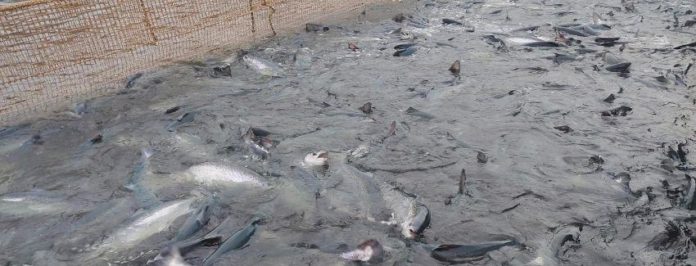An algal bloom is responsible for a mass mortality affecting 1,140 metric tons of salmon in Chile.
Chile’s salmon farming industry is facing a significant challenge as Harmful Algal Blooms (HAB) have necessitated the activation of contingency plans across 18 farming sites, according to the Chilean National Fisheries and Aquaculture Service (Sernapesca).
Current data from Sernapesca indicates that the total biomass of fish across the sites amounts to 80,000 tons. To date, the mortality rate has reached a cumulative total of 1,140 tons, primarily impacting coho and trout species. This figure represents 1.4% of the total biomass of the two groups.
Cristian Hudson, the Regional Director of Sernapesca Los Lagos, provided insights into the ongoing situation: “Although the spread of this microalgae has broadened, we are currently observing significant mortality impacts at only two sites. We have successfully extracted 650 tons of fish within the prescribed deadlines of our aquaculture pre-alert system. Our team continues to closely monitor and supervise the affected areas to manage this contingency effectively.”
Sernapesca has confirmed that the current harmful algal bloom in the Reloncaví Estuary and Sound is attributed to the microalgae Thalassiosira pseudonana. This strain of microalgae does not pose a risk to bivalve mollusks or other fish species, providing a measure of reassurance to the broader aquaculture industry in the region.
In response to this ecological challenge, Chilean authorities and stakeholders in the aquaculture sector are working collaboratively to mitigate the impact of Harmful Algal Blooms and preserve the integrity and sustainability of the nation’s vital salmon farming industry. Updates on the situation will continue to be issued as new developments arise.

